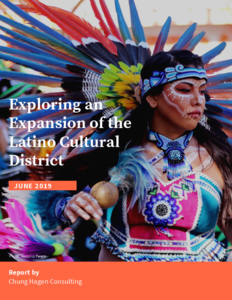
The concept of expanding the Latino Cultural District stems from community efforts to stabilize cultural communities across San Francisco facing displacement. The impact of displacement and gentrification on residents, businesses, artists, and nonprofits in the Mission are well documented in several recent studies, whose main themes surfaced in this community engagement process and include:
- Demographic shifts. The Latino population in the Mission dropped from 50% in 2000 to 39% in 2018, and the neighborhood lost 26% of its families. Meanwhile, high-income households – those making more than 200% of the Area Median Income or more than $206,000 – doubled.
- Tenant and housing crisis. Evictions remain high, and 37% of households are “rent-burdened”.
- Business, nonprofit and artist displacement. Long-time organizations face rising rents and changing needs, and many feel unequipped to adapt.
This community engagement process spanned four months from January to May 2019 to answer three core questions:
1) What makes the Mission Street corridor special and unique? 2) What opportunities could be developed to meet the Cultural Districts Program goals? 3) Is there value in expanding the Latino Cultural District?
To answer these questions, the process used various information gathering methods including 11 in-depth interviews, 8 focus groups with 81 participants, a broad-based community meeting with 78 attendees, 13 interviews with small businesses, and individual meetings with neighborhood and business associations.
Source: Executive Summary
